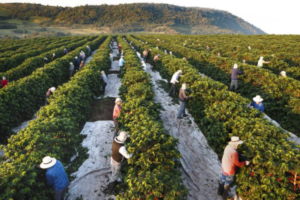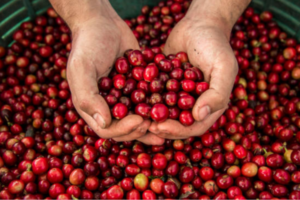Introduction
The aroma of freshly brewed coffee is more than just a sensory delight; it’s a journey through history, culture, and commerce. From its humble origins in the highlands of Ethiopia to becoming one of the most traded commodities in the world, coffee holds a significant place in global society. In this article, we embark on a fascinating exploration of the rich history of coffee, tracing its origins, evolution, and enduring impact on human civilization.
Origins of Coffee: Ethiopia and Beyond
Our journey begins in the ancient forests of Ethiopia, where legend has it that a goat herder named Kaldi first discovered the stimulating effects of coffee beans. According to folklore, Kaldi noticed his goats becoming unusually energetic after consuming the red berries from a particular shrub. Intrigued, he sampled the berries himself and experienced a newfound alertness. This discovery marked the beginning of coffee’s journey into the wider world.
From Ethiopia, coffee cultivation spread to the Arabian Peninsula, where it became an integral part of social and religious rituals. By the 15th century, coffee houses, known as qahveh khaneh, had become centers of social activity in cities like Constantinople, Cairo, and Mecca. These establishments served as hubs for intellectual discourse, political debate, and cultural exchange, laying the foundation for the modern café culture that persists to this day.
The Rise of Coffee in Europe
The popularity of coffee continued to spread throughout the Islamic world and eventually reached Europe in the 17th century. Venetian merchants introduced coffee to the continent, where it quickly gained favor among the aristocracy and intellectual elite. Coffee houses, known as “penny universities” due to the stimulating conversations they fostered for the price of a cup, proliferated across major European cities.
However, coffee initially faced resistance from religious authorities and conservative elements who viewed it with suspicion. In 17th-century England, coffee was denounced as a “bitter invention of Satan,” leading to the establishment of the “Women’s Petition Against Coffee,” which claimed that coffeehouses lured men away from their homes and duties. Despite such opposition, coffee’s popularity continued to soar, and by the 18th century, it had become an integral part of European culture.
Colonial Expansion and the Birth of Coffee Plantations
The demand for coffee in Europe fueled a global expansion of cultivation, leading to the establishment of coffee plantations in colonies across the Americas, Africa, and Asia. European powers vied for control of coffee-producing regions, leading to the exploitation of labor and the establishment of vast plantation systems.
In the Americas, coffee cultivation flourished in regions with suitable climates and fertile soil, such as Brazil, Colombia, and Central America. The labor-intensive nature of coffee production led to the widespread use of enslaved and indentured labor, particularly in the Caribbean and Latin America. The legacy of this exploitative system continues to shape social and economic dynamics in coffee-producing regions to this day.
The Industrial Revolution and Mass Production
The 19th century witnessed the industrialization of coffee production, as advancements in technology revolutionized the way coffee was harvested, processed, and distributed. Innovations such as the coffee roaster, grinder, and vacuum packaging enabled mass production and extended the shelf life of coffee beans.
The rise of coffee as a global commodity spurred the development of trade routes, transportation networks, and market exchanges. Coffee became an essential commodity in international trade, with major trading houses and corporations exerting significant influence over global markets. The establishment of organizations like the International Coffee Organization (ICO) sought to regulate production and stabilize prices in an increasingly interconnected world.
Coffee in the Modern Era
In the 20th and 21st centuries, coffee has undergone a renaissance, driven by changing consumer preferences, advancements in brewing techniques, and a growing emphasis on sustainability and ethical sourcing. The rise of specialty coffee shops, third-wave roasters, and artisanal brewing methods has elevated coffee from a commodity to a culinary experience.
Moreover, the emergence of fair trade and direct trade practices has sought to address the social and environmental challenges associated with coffee production. Consumers are increasingly conscious of the ethical implications of their coffee consumption, demanding transparency and accountability throughout the supply chain.
Exploring Coffee’s Cultural Impact
Beyond its economic significance, coffee has profoundly influenced cultures and societies around the world. From the vibrant café cultures of Europe to the intricate tea ceremonies of East Asia, coffee has woven itself into the fabric of daily life, shaping social interactions, traditions, and rituals.
Café Culture Around the World
In Europe, coffeehouses have long served as vital hubs of social activity, intellectual discourse, and political debate. From the literary gatherings of 17th-century London to the bohemian cafés of 20th-century Paris, coffeehouses have been meeting places for artists, writers, philosophers, and revolutionaries. These establishments fostered a sense of community and camaraderie, where individuals from diverse backgrounds could come together over a shared love of coffee and conversation.
Similarly, in the Middle East and North Africa, coffee plays a central role in hospitality and social rituals. The traditional Arabic coffee ceremony, known as “qahwa,” involves the meticulous preparation and serving of strong, cardamom-infused coffee to guests as a symbol of welcome and respect. In countries like Turkey and Greece, coffeehouses, known as “kavahanes” and “kafenia” respectively, serve as gathering places for friends to relax, socialize, and play games like backgammon.
Coffee in the Americas
In the Americas, coffee has left an indelible mark on culture and society, particularly in regions with a strong tradition of coffee cultivation. In countries like Brazil and Colombia, coffee plays a central role in daily life, with coffee breaks, known as “cafézinho” and “tinto,” serving as opportunities for relaxation and socializing. In the Caribbean, the rhythmic beats of salsa and merengue are often accompanied by the aroma of freshly brewed coffee, reflecting the fusion of African, Indigenous, and European influences in the region.
Rituals of Preparation
Coffee preparation methods vary widely across cultures, each reflecting unique traditions, preferences, and customs. In Ethiopia, the birthplace of coffee, the traditional coffee ceremony involves roasting green coffee beans over an open flame, grinding them by hand, and brewing them in a clay pot called a “jebena.” The process is steeped in symbolism and ritual, with participants engaging in prayers, incense burning, and the sharing of blessings.
In Italy, the home of espresso, coffee is an art form, with baristas meticulously crafting perfect shots of espresso with crema so thick it can support a spoon. The Italian espresso bar is a cultural institution, where patrons stand at the counter, savoring their coffee in a swift and efficient manner before continuing with their day.
The Future of Coffee
As we look to the future, the global coffee industry faces a myriad of challenges, including climate change, deforestation, and socioeconomic inequality. Rising temperatures, erratic weather patterns, and the spread of pests and diseases pose significant threats to coffee production, jeopardizing the livelihoods of millions of farmers and the future availability of this beloved beverage.
Moreover, the coffee industry grapples with issues of sustainability, transparency, and social responsibility. Consumers are increasingly demanding ethically sourced, environmentally friendly coffee products, leading to the proliferation of certifications like Fair Trade, Rainforest Alliance, and Direct Trade. These initiatives aim to ensure that coffee is produced in a manner that respects the rights of workers, protects the environment, and supports the economic well-being of farming communities.
Conclusion
The history of coffee is a testament to its enduring allure and significance in human civilization. From its origins in the forests of Ethiopia to its global ubiquity today, coffee has shaped economies, cultures, and societies around the world. As we savor the aroma of a freshly brewed cup, let us remember the centuries of history and tradition that have brought this humble bean to our tables. In exploring the history of coffee, we gain not only an appreciation for its rich cultural heritage but also insights into the interconnectedness of our world and the power of a simple beverage to unite and inspire.
Coffee’s journey from the forests of Ethiopia to the bustling cafés of modern metropolises is a testament to its enduring appeal and cultural significance. As we continue to navigate the complexities of the global coffee industry, let us remember the rich history, traditions, and rituals that have shaped our relationship with this remarkable beverage. Whether enjoyed alone in quiet contemplation or shared with friends amidst lively conversation, coffee remains a source of comfort, connection, and inspiration for people around the world.



